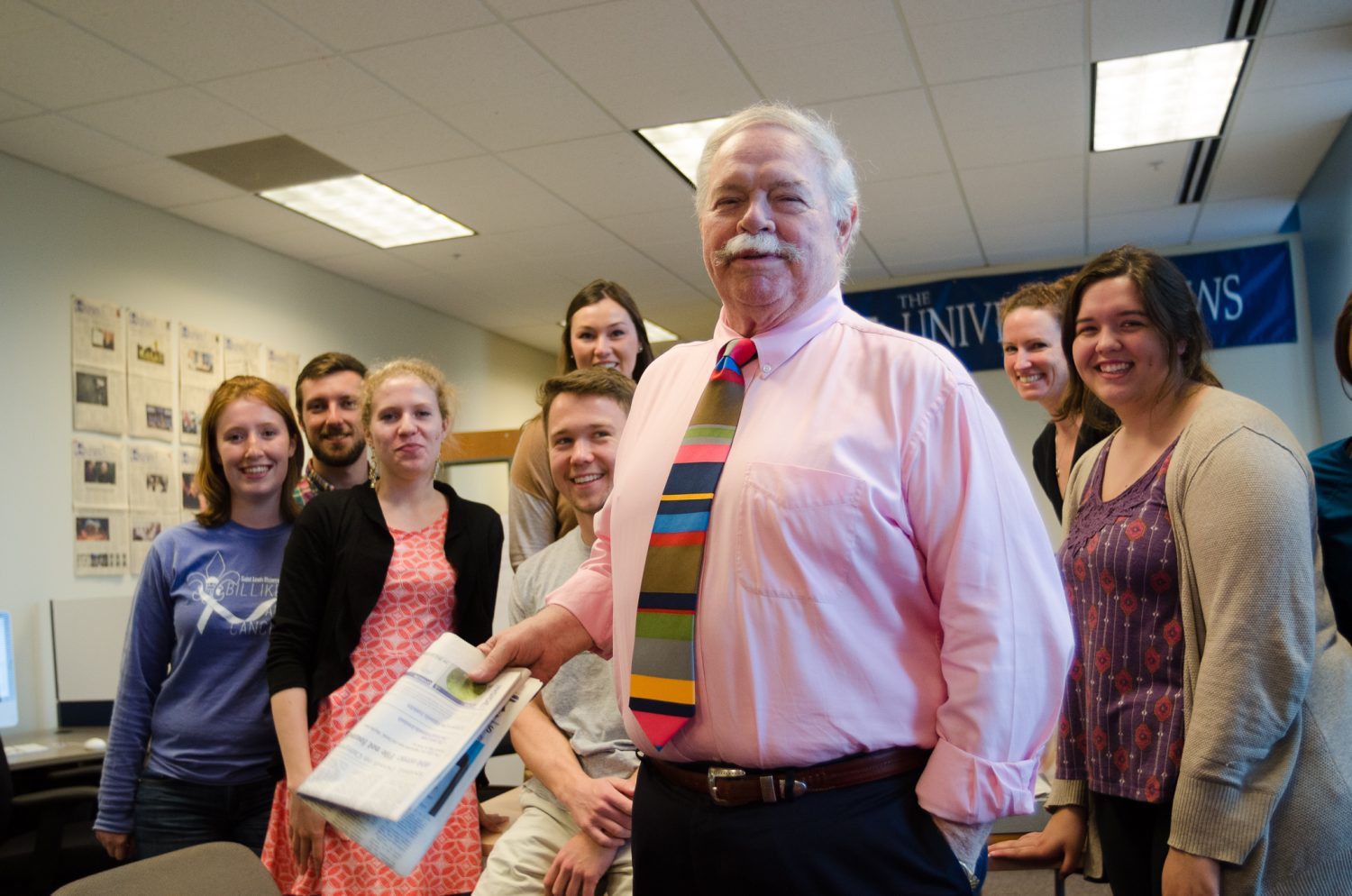On Sept. 30, 1987 a change in the leadership of Saint Louis
University took place, as Lawrence Biondi, S.J. was inducted as the
University’s 31st president.
That evening, the inauguration ceremony and reception were held
at Powell Symphony Hall. Members of the Board of Trustees,
administrators, faculty, staff and students were present to welcome
the University’s new leader.
Biondi previously served as the dean of Arts and Sciences at
Loyola University Chicago and was accustomed to academia. SLU,
however, was not accustomed to Biondi.
Those present at the inauguration ceremonies may have had
similar thoughts: What kind of person was Fr. Biondi? What was his
administrative style? What would be his priorities and objectives?
What impact would he have?
Some of these questions have been answered clearly after 17
years. By almost any measure–enrollment, ranking, endowment and
physical resources–SLU’s fortunes are drastically different since
Biondi assumed the leadership of the University.
At the same time, the man at the center of these changes remains
an enigma–known about by many but known well by few.
Who is this man who has persevered so long in a position
notorious as a thankless job?
Biondi was born in Chicago on Dec. 15, 1938, the son of parents
native to Lucca, Italy. His father was a chef and his mother was a
homemaker. Throughout his childhood, Biondi, the youngest of three
children, was brought up in a strong Roman Catholic household and
was educated in Catholic elementary and secondary schools.
During his senior year at St. Ignatius High School, Biondi
participated in a five-day religious retreat. During that time, he
prayed about his future career and after this period of reflection,
he felt that he had a vocation to be a Jesuit. Biondi entered the
Chicago Province of the Society of Jesus in 1970.
Before becoming Fr. Biondi, Mr. Biondi taught both French and
Latin at St. Xavier High School in Cincinnati from 1965-1967.
Robert Heidt, M.D., a former student, reflects on his days as a
student in Biondi’s classroom.
“I remember him as being very smart, but he also had a pretty
good sense of humor,” Heidt said. “He was witty, very witty.”
In addition to teaching, Biondi also served as the director of
the modern languages department and was the faculty moderator for
both the Poster Club and Camera Club at St. Xavier. In an article
profiling the involved educator, the high school yearbook describes
him as “ubiquitous Mr. Biondi,” and explains “seniors feared Mr.
Biondi’s grading system in class.”
After two years in the high school environment, Biondi returned
to Chicago and began teaching modern linguistics at Loyola
University. After three years, Biondi became chairman of the
department, and seven years later he was named dean of the College
of Arts and Sciences, a position Biondi held for seven years.
In 1983, then-University President, Thomas Fitzerald, S.J.,
invited Biondi to be a member of the Board of Trustees.
“I remember that when I came to Saint Louis University for my
first board meeting, I drove right past the Frost campus because
nothing marked it,” Biondi recalled in an interview with
Universitas, SLU’s alumni magazine.
Four years later, on Aug. 10, 1987–the feast day of St.
Lawrence–Biondi arrived in St. Louis to take on a different
role–the job as president of SLU.
John Padberg, S.J., director of the Institute of Jesuit Sources
at SLU, recalls his initial encounter with Biondi at SLU.
“He was vigorously and energetically convinced the university
be–and be known as–a Catholic and Jesuit University,” Padberg
recalls.
Biondi was effusive in his initial address at Powell Symphony
Hall, expressing his own high expectations for his presidency.
“The building boom of the ’80s is all but concluded. Most of the
major facilities are in place, and our aim now must be to fill them
with the very best professors and the most gifted and dedicated
students,” Biondi said. “No professor, no department head, dean or
vice president is specifically charged with overseeing this
totality. Which is not to say that I am alone in caring about the
University as a whole but I am alone in caring for it. Thus, I
intend to maintain an overview, to keep the ‘big picture’ in focus,
to bring the people and resources together so that all those who
are part of this noble undertaking may work together in perfect
harmony.”
After 17 years, the “big picture” of the Biondi legacy is more
than the sketch drawn on inauguration day. Though not all of the
changes that Biondi has made have been popular, their impact is
undeniable, as is the impact of the priest who was once known as
the “ubiquitous Mr. Biondi.”





